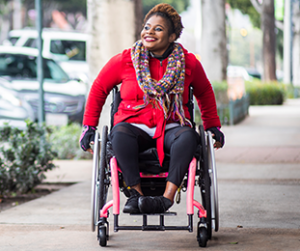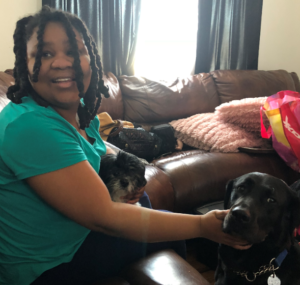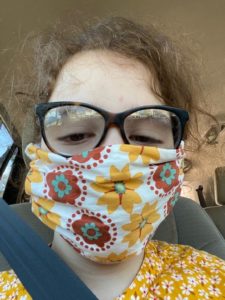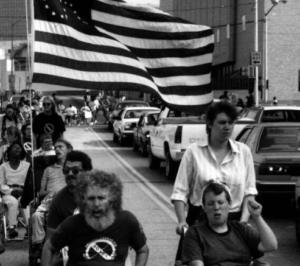Education and Parenting: We Don’t Have to Operate by the Old Rules Anymore
by Beth Finke
I am pleased to introduce Deana Herrman as our featured Education and Parenting guest blogger today. The mother of two, Deana is a disability advocate and healthcare worker who is working on a PhD in disability studies at University of Illinois Chicago. Her daughter Anja uses a wheelchair and started her freshman year of high school last week. “In her bedroom,” Deana explains. “Her school is full remote.” In her guest post today, Deana welcomes parents of non-disabled children to a world of uncertainty when it comes to having their kids back in school.
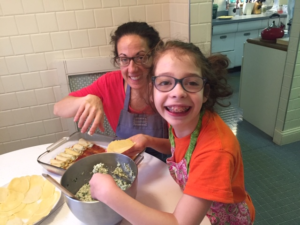
Deana Herrman with her daughter Anja
An Open Letter to Parents of Non-Disabled Kids
by Deana Herrman
Dear parents of non-disabled kids frustrated about school reopening plans,
Welcome.
COVID-19 school re-opening plans are challenging for parents. Maybe school has always been a safe and fun space for your child before this. Light and productive interactions with teachers got students exactly what they needed, and relationships with fellow parents were easy.
Now, everything is different.
Fear that school is not going to do what’s best for student learning, not having a way to appropriately interact with students or not having the right equipment to promote learning are new worries.
School is this weird mess of tech that may or may not work, and quick ins-and-outs of the building for check-ins, supplies, and visits are not guaranteed. Enrolling a kid in school now is a new and unpaved path to form relationships between educators, administrators and communities.
Parents are left to manage it all. Parents don’t know what to tell kids to expect. Parents aren’t sure where and when to push on administrators, school boards and teachers and when to back off. Parents don’t get immediate answers from schools or get answers they don’t like; answers filled with uncertainty or a “we’re doing our best” assurances.
Welcome to our world.
For parents of kids with disabilities, this uncertainty isn’t so new. Navigating a school system with a kid with a disability, particularly if you are not disabled, means you cannot really tell your kid what school will be like for them. You can never tell them with all honesty that it’s going to be okay and that school is a safe space for them. How would we know? We have never experienced school as a disabled person. And parents of non-disabled children have never gone to school during a pandemic, either.
Those of us who have children with disabilities are likely to have dealt with conversations of loneliness and strained relationships as a result of school policies before. We’ve been working around limited access to technology long before COVID. Not knowing what is around the corner for your kid, feeling like the school may not be doing what’s best, wrestling with feelings of anger or distrust at the district while still trying to show support when the school gets it right — we have been there. Knowing when to let your child handle school challenges with teachers, policies or course work on their own and when to jump in is not easy.
COVID has made the environment impossible for a school to operate as it did previously, affecting the majority of students now, not just a minority of disabled students. The majority of our kids are now subject to an imperfect environment and policies that are confusing. No one can function optimally in it.
Students with disabilities have been operating in an imperfect school environment for years. Parents of children with disabilities have been making it up since our kids entered school. But… we don’t have to operate by the old rules anymore.
Reopen, hybrid, full remote? Who knows? Can we start over? Let’s throw out what didn’t work & put new guidelines and expectations in place. Let’s bring in all the voices and perspectives so we are not continuing to ignore those who don’t always have a seat at the table. As everything is restructured, let’s consider students with disabilities alongside their peers right from the start, not afterwards like was done before. Now, with everything in flux, this is an opportunity for parents of children with all abilities to work together, look at what we were doing before & re-imagine how we can do it better.











